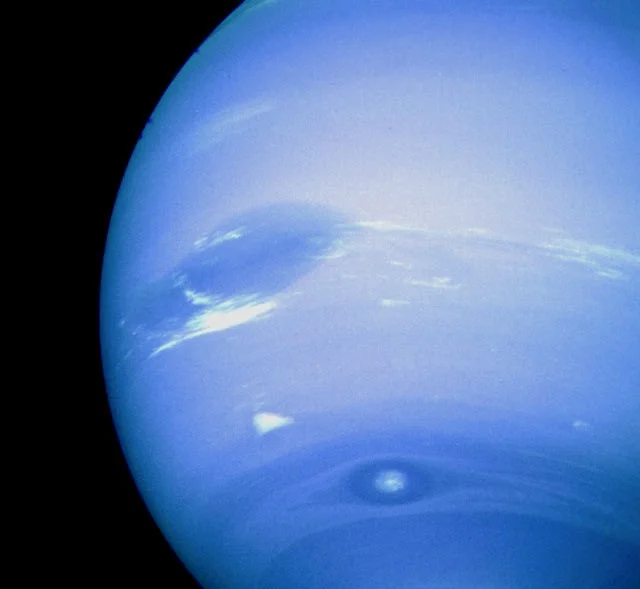After 40 years, Voyager 1 and 2 continue to push the boundaries of science
When the Voyager 1 and 2 identical twin space probes launched from Cape Canaveral Air Force Station in 1977, no one could have known that they would still be sending data back to Earth today. Voyager 1 and 2 were designed to last for only 12 years and have since far exceeded that original design requirement.
Suzanne Dodd, the current project manager for the Voyager Interstellar Mission (VIM), believes the Voyager spacecraft are as healthy as they could be 40 years into their mission. Over that timespan the Voyager probes have experienced some instrument failures, but system engineers built a lot of redundancy into them and that has extended their useful lifespan. “Voyager 1 does not have an active operating plasma science instrument, what that means is that Voyager 1 cannot directly feel the solar wind and the charged particles coming from the sun. … It sort of has to infer that from a different instrument.” As for its twin, “Voyager 2 is tone deaf, every time we send a command to the spacecraft we have to put it into a few different frequencies in order for the spacecraft to hear it.”
The signal from the Voyager spacecraft is very weak because they are so far away from the Earth. Dodd explained, “Voyager 1 is the furthest spacecraft from us at 13 billion miles, it travels at 38,000 miles per hour — nothing is going to catch up to it. Voyager 2 is traveling a little bit slower, 34,000 miles per hour approximately. But that’s still 40 times the speed of sound here on Earth.” It’s a tremendous accomplishment for communications technology that scientists can “hear” the Voyager probes at all. “The round-trip light time to Voyager 1 is 38 hours,” she said. It currently takes 19 hours and 22 minutes for a signal from Voyager 1 to reach the Earth while traveling at the speed of light, and the round-trip light time is double that figure.
The transmitters that the Voyager spacecraft use beam out signals at 22.4 and 23 watts — about the equivalent of a refrigerator light bulb. By the time a signal from Voyager 1 reaches the Earth, it has the power of only about one-tenth of a billion-billionth of a watt. Norman Haynes, the Project Manager for the Voyager flyby of Neptune, said in an interview for the book Voyager Tales that NASA’s Deep Space Network had to be upgraded to hear the Voyagers’ signals from Neptune and beyond. “We had to keep upgrading it, making the antennas bigger, and getting agreements from foreign countries to let us use some of their antennas in conjunction with ours, because by the time you get to Neptune, you’re 30 times as far away from the sun as the Earth is. The communication distances are measured in billions of miles.” In 1988 NASA upgraded its largest antenna dish from 64 meters diameter to 70 meters across to be able to support the Voyager 2 flyby of Neptune.
Voyager 2 was the first spacecraft to observe Neptune in 1989. SOURCE: https://voyager.jpl.nasa.gov/galleries/images-voyager-took/neptune/
But because of their fast speed and long distance from the Earth, every place that the Voyager probes go is somewhere that has never been explored before. On August 25, 2012, Voyager 1 entered interstellar space. No other instrument has ever been able to do research from inside interstellar space, so Voyager 1 is a unique opportunity for scientists. Eric Zirnstein, a researcher at Princeton University, described how data from Voyager 1 can be compared to data from NASA’s IBEX satellite. “The Interstellar Boundary Explorer — or IBEX — is an Earth-orbiting spacecraft that detects neutral atoms that are created in the outer heliosphere. So these neutral atoms are created at distances where Voyager spacecraft are and travel through space and can be detected at Earth.” He continued, “Voyager gives the ground truth to what we heliosphere physicists see in the IBEX observations. So IBEX gives a global picture, but Voyager actually tells us what is happening in location in space. So using them simultaneously is really important for our research.”
Zirnstein continued, “What Voyager has shown us is not only that it’s exciting and astounding to see all of these observations, but also that we’re capable of doing this. And hopefully it’s going to be one of many in the future.” Dodd expressed hope that the Voyager probes can continue to send back data for years into the future. “Power is our limiting resource, we use a radioisotope thermal generator on the spacecraft… We lose 4 watts of power a year. So, now, especially, going into our fifth decade of operations, the real key is: how long to make this spacecraft operate and when will we have start turning off instruments?” She hopes to have at least one science instrument operating on the Voyager probes through 2025 or longer.
Sources: Voyager Tales book
This post was originally published on September 13, 2017.


